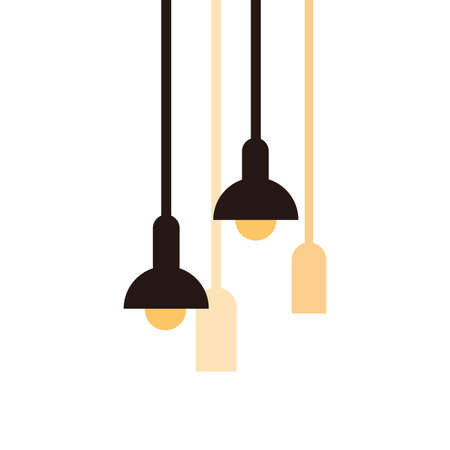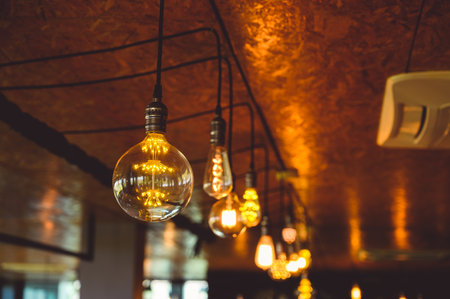Introduction to Layered Lighting
In today’s American homes, design is about more than aesthetics—it’s about creating spaces that feel balanced, comfortable, and visually engaging. Layered lighting is the foundation of this approach, combining ambient, task, and accent lighting to shape a dynamic environment. Unlike a single overhead fixture, layered lighting lets you highlight architectural features—like exposed beams, textured walls, or dramatic staircases—while setting the perfect mood for any occasion. This thoughtful method brings depth and dimension into your living space, making every corner functional and inviting. Embracing layered lighting isn’t just a trend; it’s an essential part of modern home design that puts your unique architectural details in the spotlight.
2. Identifying Key Architectural Features
Before you can highlight your space with layered lighting, you need to identify which architectural details deserve the spotlight. Every home has its own unique character, whether it’s exposed wooden beams, dramatic alcoves, textured walls, or statement staircases. Recognizing these features is the first step in crafting a lighting plan that truly elevates your interior design.
What Should You Look For?
Start by walking through your space and observing the structural elements that catch your eye. Think about shapes, textures, materials, and built-in details that set your home apart. These are often the most compelling candidates for accent lighting.
Common Architectural Features to Highlight
| Feature | Description | Lighting Tip |
|---|---|---|
| Exposed Beams | Add warmth and character; often found in lofts or historic homes | Use uplights or linear LEDs to emphasize depth and texture |
| Alcoves & Nooks | Create cozy pockets or display areas within a room | Install recessed or spot lighting to draw attention and create mood |
| Textured Walls | Feature brick, stone, or decorative panels | Graze with wall washers to highlight surface detail |
| Staircases | Architectural focal points that guide movement through a space | Add LED strips under treads or sconces along the wall for drama and safety |
| Crown Molding & Trimwork | Add dimension to ceilings and walls; classic or modern appeal | Use cove lighting for a soft glow that outlines the architecture |
Pro Tip: Prioritize Impactful Elements
You don’t have to light every feature—focus on what makes your space feel distinctive. Consider how each element fits into your lifestyle and overall aesthetic. Thoughtful selection ensures your layered lighting feels intentional and elevates both form and function.

3. Types of Lighting Layers
Layered lighting is all about balance and intentionality. To truly highlight architectural features, it’s crucial to understand the three main types of lighting: ambient, task, and accent. Each layer serves a specific function, working together to create depth and drama within a space.
Ambient Lighting
Think of ambient lighting as your base layer—the soft glow that fills the room and sets the overall mood. In American homes, this often comes from ceiling-mounted fixtures, recessed lights, or even modern LED strips. Ambient light ensures that architectural forms are visible without creating harsh shadows, allowing features like vaulted ceilings or open-plan layouts to breathe naturally.
Task Lighting
Task lighting is precise and practical. It illuminates specific areas where activities happen—like kitchen islands, reading nooks, or bathroom vanities. But beyond functionality, well-placed task lights can draw attention to architectural details such as textured backsplashes, custom millwork, or statement staircases. In open-concept American interiors, under-cabinet LEDs or pendant lamps above workspaces both serve a purpose and sculpt the environment.
Accent Lighting
This is where your design voice shines through. Accent lighting spotlights unique architectural elements—a dramatic archway, exposed brick wall, or artful alcove. It’s about adding dimension and intrigue, using fixtures like adjustable spotlights or wall washers to direct focus exactly where you want it. In contemporary American spaces, accent lights often provide that magazine-worthy moment—showcasing craftsmanship while adding personality.
The Power of Layering
When you combine these layers thoughtfully, you don’t just illuminate a room—you shape it. By leveraging ambient, task, and accent lighting in harmony, every architectural detail gets its moment in the spotlight while supporting the overall aesthetic of your home.
4. Strategies for Placement
Smart fixture placement is essential for highlighting architectural features and creating visual harmony. Here are design-forward tips to help you position lights with intention and style:
Understand the Focal Points
Identify what you want to showcase: dramatic archways, textured walls, or statement ceilings. Each element calls for a different lighting approach. For example, use uplighting to accentuate columns, while wall washing can bring out the texture of exposed brick.
Angles Matter
The angle at which you direct light impacts mood and perception. A 30-degree angle is ideal for spotlighting art or sculptures, minimizing harsh shadows. For wall grazing, set fixtures close to the surface at a steep angle to emphasize textures without glare.
Placement Guide
| Architectural Feature | Recommended Fixture | Optimal Angle |
|---|---|---|
| Accent Walls | Wall Washers | 20-35° |
| Ceiling Details | Recessed Downlights | Straight Down or 15° Offset |
| Columns & Arches | Uplights/Spotlights | 10-30° Upward |
| Niches/Shelves | LED Strips/Puck Lights | Underneath or Backlit |
Create Layers with Purpose
Mix ambient, task, and accent lighting for depth and flexibility. Start by establishing a base layer (ambient), then add task lights for functionality, and finish with accent lights to dramatize specific features. Dimmer switches allow you to fine-tune each layer, adapting your space from day to night.
Avoid Overcrowding
Simplicity is key—avoid cluttering your ceiling or walls with too many fixtures. Let each light have a purpose, whether it’s guiding the eye or enhancing texture. Thoughtful spacing ensures that every feature stands out without overwhelming the overall design.
5. Selecting Fixtures and Controls
Choosing the right fixtures is crucial to elevating your layered lighting scheme and highlighting key architectural elements. In American interiors, stylish yet functional light fittings—think matte black sconces, brushed brass pendants, or minimalist LED track lights—are both popular and versatile. Focus on selecting fixtures that complement your home’s design language, whether it’s mid-century modern, contemporary, or classic colonial. For instance, recessed lighting offers a clean look for ceilings with dramatic beams, while sculptural floor lamps can add artistic flair near statement walls.
Equally important are the controls you use to manage ambiance. Smart dimmers and app-enabled systems have become standard in many American homes, allowing you to effortlessly adjust intensity and color temperature based on mood or time of day. Layering different zones—such as wall washing for texture, accent lights for art niches, and ambient sources for general illumination—creates depth and flexibility. Consider installing programmable scenes so you can shift from energizing daylight settings to cozy evening glows with a simple touch or voice command. By thoughtfully pairing stylish fixtures with intelligent controls, you craft an environment that feels both curated and comfortable, perfectly attuned to highlight every unique feature in your space.
6. Bringing It All Together
When it comes to layered lighting, the real magic happens when you see all the elements working in harmony within a space. Let’s explore how designers in the U.S. are combining ambient, task, and accent lighting to showcase architectural features in contemporary homes.
Case Study: Open-Concept Living Room
In a modern San Francisco loft, recessed ceiling lights provide soft ambient illumination while sleek LED strip lights run along exposed beams, drawing attention to the architecture overhead. A cluster of sculptural pendants hangs above the seating area, offering targeted task lighting for reading or conversation. Wall-mounted sconces accentuate an original brick wall, creating visual depth and warmth.
Highlighting Focal Points
Architectural features like built-in bookshelves or dramatic fireplaces become natural focal points with the right mix of lighting. In a New York brownstone, designers use adjustable track lights to spotlight custom millwork and art niches, ensuring these design details don’t go unnoticed.
Balancing Function and Style
The key is balance—layered lighting should enhance both form and function. For example, under-cabinet LEDs in a Seattle kitchen illuminate countertops for meal prep while adding a sophisticated glow that highlights clean lines and premium materials.
By thoughtfully combining different light sources, you can create dynamic interiors that not only look incredible but also adapt to every mood and moment. Layered lighting isn’t just about visibility—it’s about expressing your home’s unique character through light.


